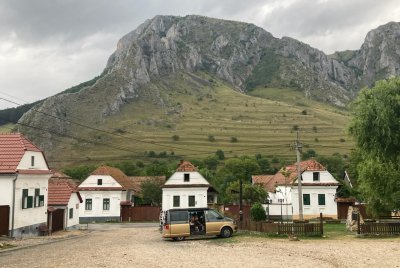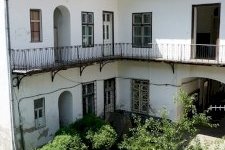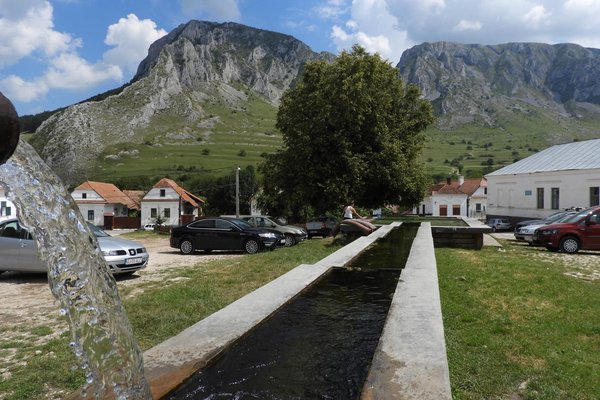Romania
The old villages of Hollókõ and Rimetea
Site Info
Official Information
- Full Name
- The old villages of Hollókõ and Rimetea and their surroundings (ID: 5683)
- Country
- Romania
- Status
-
On tentative list 2012
Site history
History of The old villages of Hollókõ and Rimetea
- 2012: Added to Tentative List
- Added to tentative list
- Type
- Cultural
- Criteria
Links
- UNESCO
- whc.unesco.org
All Links
UNESCO.org
- whc.unesco.org — whc.unesco.org
Community Information
- Community Category
- Urban landscape: Post-medieval European
Travel Information
Recent Connections
News
No news.
Recent Visitors
Visitors of The old villages of Hollókõ and Rimetea
Community Reviews
Show full reviewsJakob F.
The old villages of Hollókõ and Rimetea by Jakob Frenzel
The old villages of Hollókõ and Rimetea (On tentative list)

August 2024 - on our detour to Rosia Montana, we made another smaller detour to Rimetea. It is actually an Hungarian village. The inhabitants speak hungarian. And already in the morning there were tour busses visiting from Hungary.
As we did not plan to visit Hollökö, which we did due to changes in the itinerary, Rimetea was supposed to be an alternative. Landscape wise it is more spectacular, but Höllökö has wooden houses, this one typical Hungarian Stone houses, as you also find them in north Slovakia.
We had breakfast with another straying dog and continued our journey to Goldbach.
Keep reading 0 commentsLisu Marian
The old villages of Hollókõ and Rimetea
The old villages of Hollókõ and Rimetea (On tentative list)

Somewhere in genuine Transylvania, where Cluj meets Alba, the fairytale-like village of Râmetea is found, within a walking distance from Colțești. Situated just at the bottom of the Apuseni Mountains, it portrays an image of the Middle Ages, frozen in space and time. This specific area is part of the universal patrimony and comes together with Holoko, a village situated in Hungary – two twin villages, which possess a spectacular architecture that dates back to the XVII century, combined with just the right amount of modernism.
Râmetea, which has been populated ever since the ancient Roman times, has slowly become an important a crafts-center, having represented the ore reserve back in the day and having encouraged every other related industries. The amount of money that has been made by those who used to melt metals for a living has undoubtedly supported all art-related domains. The mix between the Saxons and those of the Szekely Land has led to the creation of an unique and incredibly beautiful local costume and of some amazing traditions. The village museum, located at the top floor of the building that still functions as the town-hall, offers a vivid image of a past that has somehow been preserved with time. The chairs that round the table found at the entry have sculptures that depict beaks of birds, which are placed facing one another if the hosts are in a good mood. Otherwise, the chairs are placed in antagonistic positions, which lets the guests know there’s …
Keep reading 0 comments
